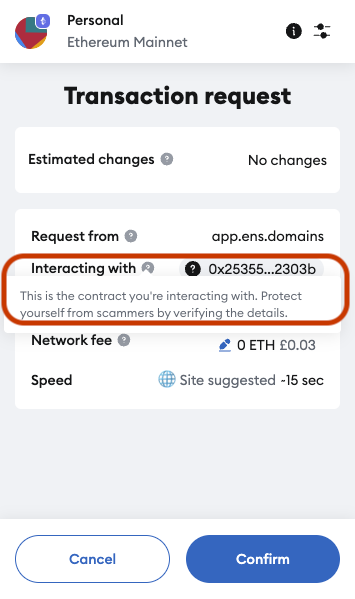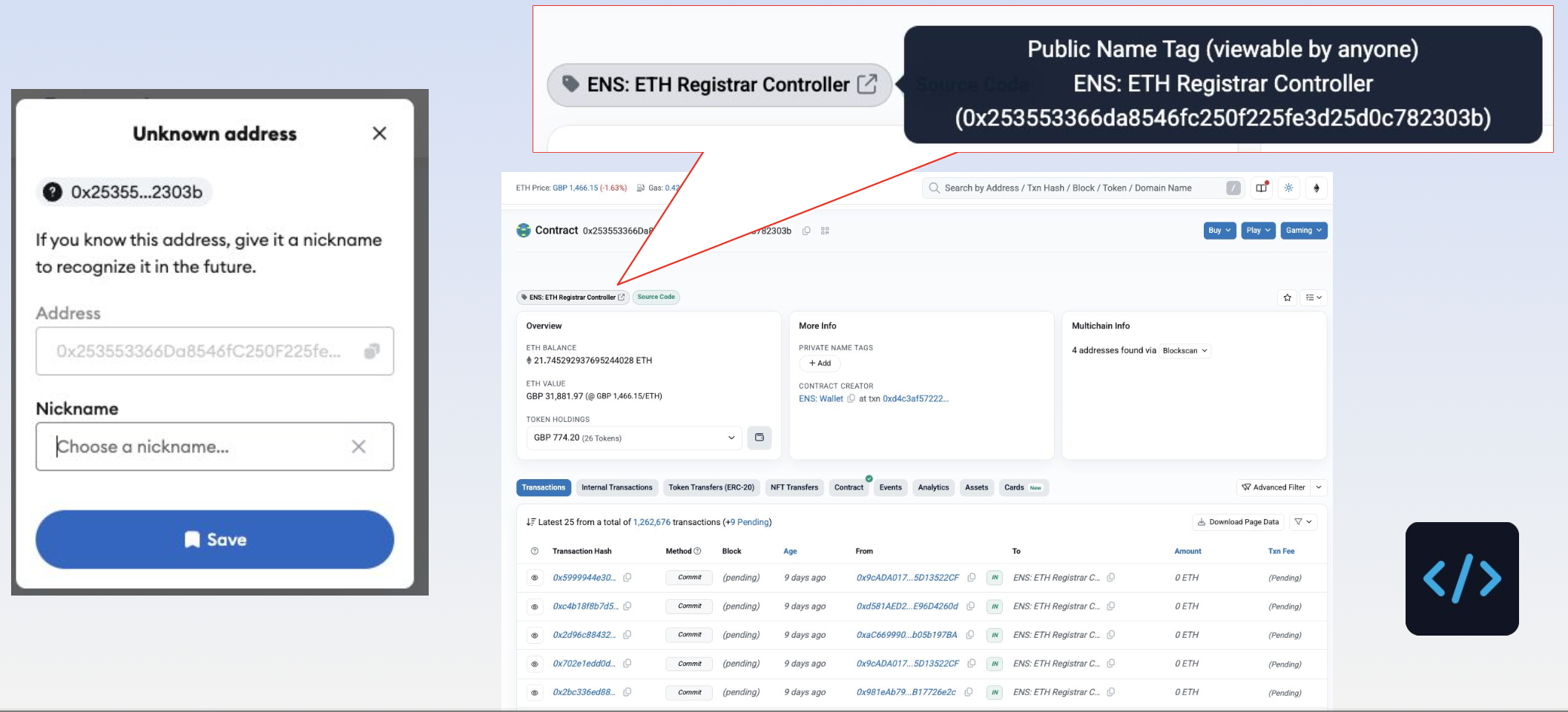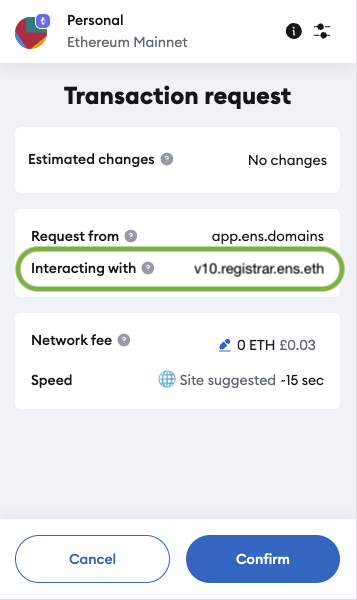Simplified Smart Contract Naming With Enscribe
This week marks the emergence of Enscribe from stealth. We've been working hard on it this past few months and are pleased to put it out into the wild.
At Enscribe, we're addressing a fundamental problem faced by nearly every Ethereum user: confusing and unreadable smart contract addresses. When initiating transactions, users are typically confronted with cryptic hexadecimal addresses, like this:

If users want to verify the contract they are interacting with (which anyone should), they have to copy the contract address and look at it another service such as Etherscan.
In Etherscan if it's a well known contract, such as the ENS ETH Registry Controller as in our example, it will have a label.

This is far from optimal. Users are relying on a centralised service, to verify the authenticity of a contract.
We believe smart contracts on Ethereum should be not be exposing their hexadecimal addresses to users and instead should be labelled with human readable names via ENS.
With ENS names, smart contracts gain identities similar to domain names, clearly indicating their creators. Imagine knowing at a glance that the contract you're interacting with was created by ens.eth. This simple clarity dramatically boosts trust and confidence during transactions:

Whilst ENS names and subdomains can be used to address smart contracts, this functionality is underutilised due to cumbersome tooling and the additional steps required to setup a primary name for a smart contract.
These hurdles are exactly what inspired the creation of Enscribe.
The Enscribe App
We have deployed the beta version of our Enscribe App at app.enscribe.xyz which allows developers to deploy smart contracts to the Ethereum Sepolia testnet.
With the app, a user performs a single transaction which performs the following steps:
With Enscribe, naming contracts at deployment via ENS becomes seamless. When they deploy a contract using the app it:
- Creates a new subname such as
v1.deployments.myname.eth - Deploys the contract to Ethereum
- Registers the primary name
All these steps happen in a single transaction, ensuring that from the moment your contract is deployed, it’s immediately discoverable through its ENS name.
You can see it in action in the below video.
In addition to new contract deployment, you can also easily name your existing contracts using Enscribe.
To learn more about using Enscribe, visit our documentation.
Our team is currently hard at work expanding support to Ethereum’s Layer-2 networks and preparing for our upcoming mainnet launch.
We'd love to hear your feedback and collaborate — join our Discord community and let’s build a clearer, safer Ethereum together.